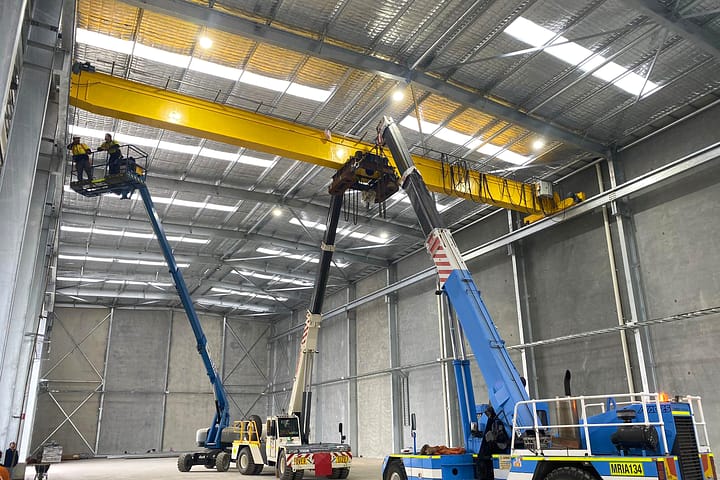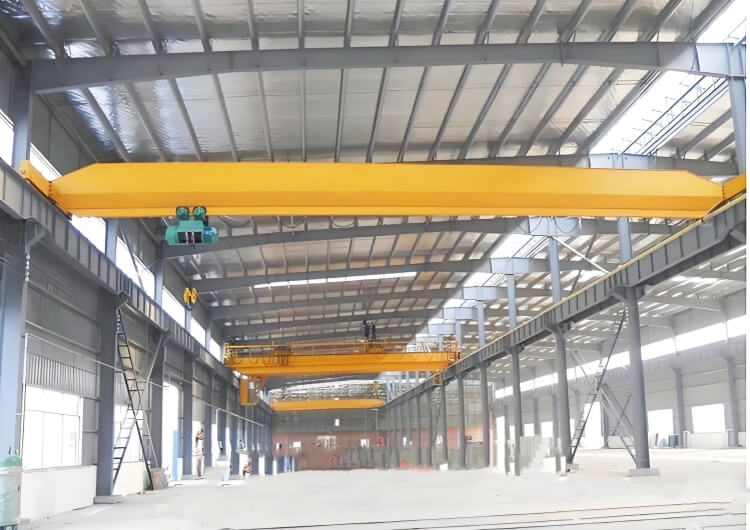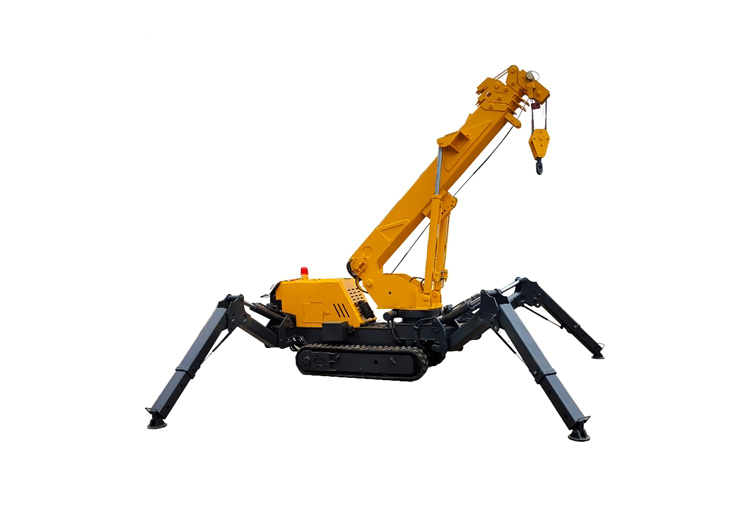When to Choose an Overhead Crane Instead of a Gantry Crane?
Businesses in industries such as manufacturing, warehousing, and construction often require lifting equipment to enhance productivity and safety. Two common types of cranes used in such applications are overhead cranes and gantry cranes. While both serve the purpose of lifting heavy loads, they differ in design, functionality, and application. In this guide, we’ll explore the scenarios when selecting an overhead crane over a gantry crane is advantageous. We will also cover detailed explanations, provide success stories, and discuss key factors that every buyer should consider.

Understanding Overhead Cranes and Gantry Cranes
What is an Overhead Crane?
An overhead crane, also known as a bridge crane, consists of a hoist that is mounted on a beam that runs along the elevated structure. Typically, these cranes are used in large facilities like warehouses, factories, and logistics centers where substantial vertical lifting is required. Overhead cranes allow for precise movement of heavy materials and equipment, providing efficiency and a safer working environment.
Advantages of Overhead Cranes
- Space Efficiency: Overhead cranes operate above ground, freeing up floor space for other activities.
- Load Capacity: They can lift very heavy loads, often exceeding the typical capacity of gantry cranes.
- Precision Control: Overhead cranes offer better control and positioning capabilities, making it easier to handle delicate or oversized items.
What is a Gantry Crane?
- Mobility: Gantry cranes can often be moved from one location to another, making them a versatile tool for construction sites.
- Cost-Effective: Generally, gantry cranes are less expensive than overhead cranes, making them a popular choice for smaller operations.
- Easy Installation: Most gantry cranes can be assembled quickly and do not require complex installation.
Key Considerations: Overhead Crane vs. Gantry Crane
When deciding between an overhead crane and a gantry crane, several key factors should be evaluated:
1. Working Environment
Overhead Cranes in Indoor Settings
Overhead cranes are ideal for indoor environments where there is ample vertical space. They can seamlessly integrate into a facility’s existing infrastructure. In environments such as manufacturing plants, their ability to lift heavy loads with precision provides unparalleled efficiency.
Gantry Cranes for Outdoor Settings
Conversely, if the lifting tasks are taking place outdoors or in environments with uneven ground, a gantry crane might be better suited. Their mobility allows for flexibility in placement and can adapt to changing conditions often found on construction sites.
2. Load Capacity Requirements
Heavy Lifting with Overhead Cranes
One of the most significant advantages of overhead cranes is their load-bearing capacity. For industries that require the lifting of extremely heavy materials—such as steel beams, heavy machinery, or large pallets—overhead cranes are typically the better choice. They come in various configurations, allowing for capacities that can exceed several tons.
Handling Lighter Loads with Gantry Cranes
Gantry cranes generally have lower load capacities when compared to overhead cranes. They are best suited for tasks involving moderately weighted loads. Industries that require lighter lifting solutions may find gantry cranes to be sufficient for their needs.
3. Precision and Control
Overhead Cranes for Precision Tasks
Overhead cranes allow for complex maneuvers and positioning of loads. Their design provides superior control, making them suitable for assembly lines or processes where load positioning is critical.
Gantry Cranes: Good for Straightforward Lifting
While gantry cranes can also provide decent control, they are typically better suited for straightforward lifting tasks rather than intricate placements. If your operations require precision, an overhead crane would be the preferable option.
4. Cost Considerations
Budgeting for Overhead Cranes
It is important to note that overhead cranes generally involve a higher initial investment than gantry cranes. However, when considering the total cost of ownership—factoring in maintenance, efficiency gains, and longevity—overhead cranes can provide significant value over time.
Gantry Cranes for Lower Budgets
For businesses operating on tighter budgets, gantry cranes provide an affordable option for lifting needs. These cranes might also incur lower maintenance costs, depending on their construction and usage patterns.
Case Studies: Successful Implementation of Overhead Cranes
Case Study 1: Automotive Manufacturing Facility
A leading automotive manufacturing company was experiencing inefficiencies in moving heavy car parts from one assembly line to another. They decided to implement an overhead crane system, which allowed them to streamline their production process. The crane’s ability to lift heavy components effortlessly and maneuver them precisely resulted in a 30% increase in productivity.
Case Study 2: Heavy Equipment Manufacturing
In a heavy machinery manufacturing plant, the company needed a solution that ensured the careful handling of large machine components. An overhead crane was installed, which not only improved safety by minimizing risk during loads handling but also led to significant reductions in downtime. Workers reported enhanced comfort and productivity, as they no longer needed to engage in strenuous lifting.
Making Your Decision
When to Choose an Overhead Crane
Choose an overhead crane if:
- Your operations require the handling of heavy loads regularly.
- The workspace provides ample vertical height.
- Precision load positioning is necessary for your tasks.
- You aim to optimize space and productivity in an indoor setting.
When to Opt for a Gantry Crane
Opt for a gantry crane if:
- Your lifting needs are lighter and do not require high load capacities.
- The working environment is outdoors or involves uneven surfaces.
- Mobility and flexibility of the crane are crucial for your operations.
- You’re operating with a limited budget and need a cost-effective solution.
Conclusion
When considering lifting equipment for your business, understanding the unique advantages and limitations of both overhead cranes and gantry cranes is crucial. Overhead cranes provide exceptional load capacity, precise control, and are best suited for indoor environments, while gantry cranes offer mobility, affordability, and are ideal in certain outdoor settings. By carefully assessing your operational needs and priorities, you can make an informed decision on which type of crane is the best fit for your specific applications and investment strategy.
Final Thoughts
Always consult with a professional crane manufacturer or supplier to assess your requirements accurately. They can provide valuable insights and tailor solutions to best meet your lifting needs. Whether you decide on an overhead crane or a gantry crane, the right choice can significantly enhance your operational efficiency, safety, and overall productivity.
All News
Recent Posts
2025/1/25
2025/2/7
2024/8/1
Contact Us Now
Have questions about our cranes or need help?
Reach out to our friendly team for expert support and guidance.
We are here to help you power your journey towards a greener future !
Address: Crane Industry Park, Xinxiang City Henan Provice



